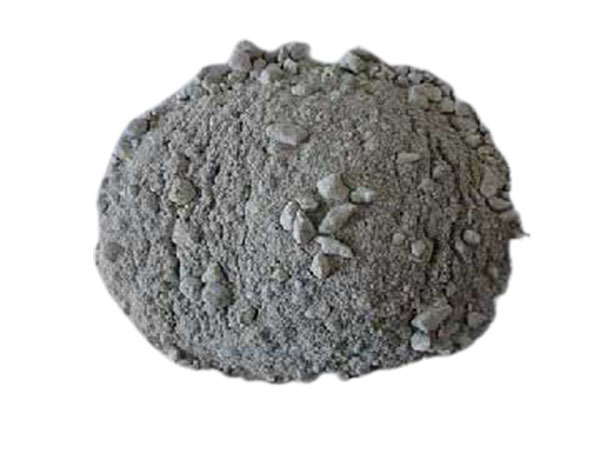Refractory castable is a type of refractory material that is composed of a certain gradation of refractory aggregates and powdery materials, combined with binders and additives. It is a class of refractory materials that can be used directly without the need for molding and firing processes.
Refractory castables do not require high-temperature firing and can be used directly after construction and curing. They have the advantages of simple production process, energy and labor saving, mechanized construction, good overall integrity, easy repair, and high service life, making them a new type of refractory material.
01
Classification of Refractory Castables
Refractory castables are usually classified based on pore size, binders or bonding methods used, types of aggregates, and construction methods.
Based on pore size, refractory castables can be classified into dense refractory castables and insulating refractory castables.
Based on bonding methods, refractory castables can be categorized into hydratable bond castables, chemically bonded (including polymer bonded) castables, hydratable and polymer combined castables (typified by low cement castables), and colloidal bond castables.
Based on the specific effects of binders and certain materials, they can be further classified into the following seven categories:
(1) Clay-bonded refractory castables; (2) Ultrafine powder (such as silica fume) bonded refractory castables; (3) Cement-bonded refractory castables; (4) Chemically bonded refractory castables; (5) ρ-Al₂O₃ (hydrated Al₂O₃) bonded refractory castables; (6) Low cement bonded refractory castables; (7) Silica and alumina sol (sol-gel) bonded refractory castables.
Based on the composition of raw materials, refractory castables can be divided into oxide-based refractory castables, non-oxide-based refractory castables, and composite refractory castables. Oxide-based refractory castables can be further subdivided into non-alkali refractory castables and alkali refractory castables.
Based on the construction method, refractory castables can be divided into two categories: vibration castables and self-flow castables.
Based on the presence of cement or CaO content, refractory castables can be simply classified into ordinary refractory castables, low cement refractory castables, ultra-low cement refractory castables, and cement-free refractory castables.
Refractory aggregates refer to the +0.88mm or +0.1mm portion of the refractory castables. They serve as the main materials in the structure of refractory castables, acting as a framework. Refractory powders, on the other hand, constitute the matrix portion of the castables. After high-temperature treatment, they bind or bond the refractory aggregates, filling the pores, achieving compact packing, ensuring the fluidity and volume stability of the mixture, and promoting sintering. Ultimately, this enhances the density, strength, and high-temperature performance of refractory castables.
Therefore, the performance of refractory castables primarily depends on the raw materials used in the formulation. To improve the performance of refractory castables, many manufacturers have incorporated high-purity raw materials, homogenized materials, electrofused materials, synthetic materials, transformation materials, and ultra-fine powders in their main ingredients. Below are 24 commonly used raw materials in the formulation of refractory castables.
02
Primary Raw Materials for Refractory Castables
(1) Sintered Corundum
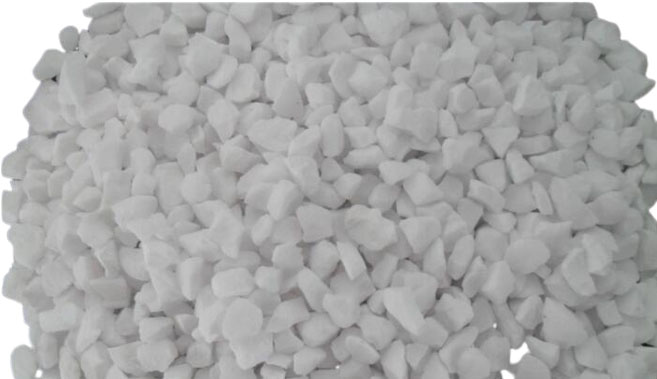
Sintered corundum, also known as sintered alumina or semi-fused alumina, is a refractory clinker produced by finely grinding calcined alumina or industrial alumina into spheres or pellets and then sintering them at high temperatures ranging from 1750 to 1900°C. Sintered alumina with an alumina trioxide (Al2O3) content of over 99% is primarily composed of homogeneous fine crystalline corundum. It has a apparent porosity of less than 3.0% and a bulk density of 3.60%/m³. It exhibits excellent volume stability and chemical stability at high temperatures, resisting erosion from reducing atmospheres, molten glass, and molten metals. It also possesses good mechanical strength and abrasion resistance at both room and high temperatures.
(2) Fused Corundum
Fused corundum is an artificial corundum produced by melting pure alumina powder in a high-temperature electric furnace. It has characteristics such as high melting point, high mechanical strength, good thermal shock resistance, strong resistance to erosion, and low linear expansion coefficient. Fused corundum is a raw material used in the manufacturing of advanced special refractory materials. It includes varieties such as fused white corundum, fused brown corundum, and semi-fused corundum.
(3) Fused White Corundum
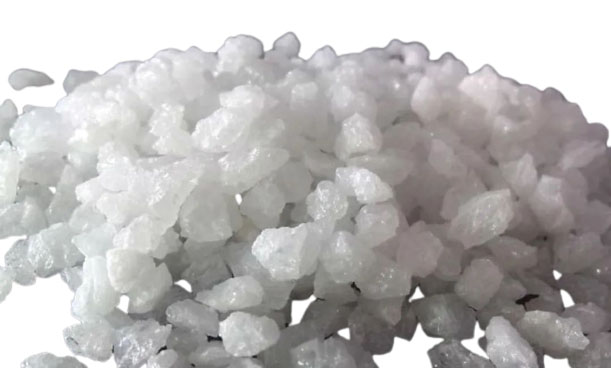
Fused white corundum is produced by melting pure alumina powder at high temperatures, resulting in a white-colored corundum. The smelting process of white corundum is essentially the fusion and recrystallization of industrial alumina powder without a reduction process. It contains no less than 9% Al2O3 and has very low impurity content. Its hardness is slightly lower and toughness is slightly inferior to brown corundum. Fused white corundum is commonly used in the production of abrasives, special ceramics, and high-grade refractory materials.
(4) Fused Brown Corundum
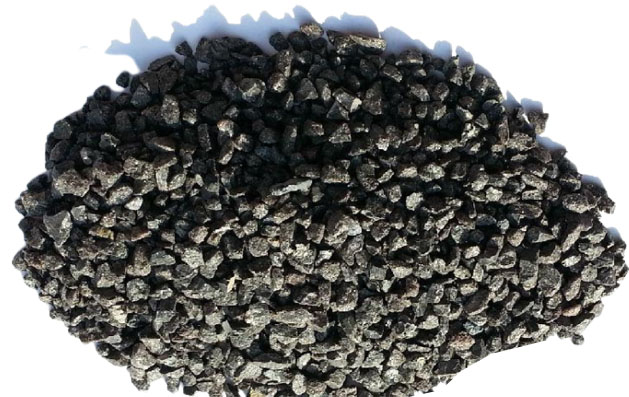
Fused brown corundum is produced by melting high-alumina bauxite with the addition of carbon (anthracite coal) in a high-temperature electric furnace above 2000°C. Its main chemical components are Al2O3 and TiO2, with small amounts of SiO2 and Fe2O3. Fused brown corundum has a dense texture, high hardness, and is commonly used in ceramics, precision casting, and high-grade refractory materials.
(5) Sub-White Corundum
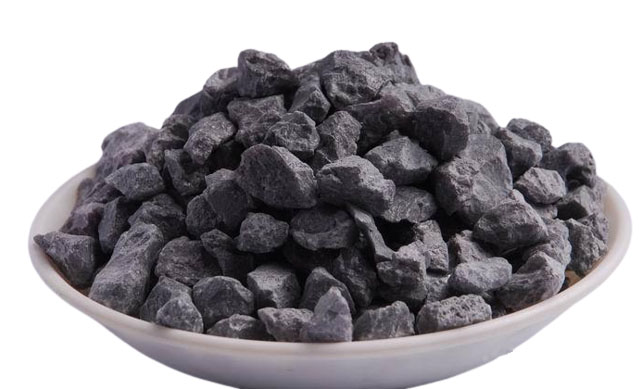
Sub-White Corundum is produced by electrically melting special-grade or first-grade alumina under a reducing atmosphere and controlled conditions. During the melting process, reducing agents (carbon), settling agents (iron scraps), and decarbonizing agents (iron scales) are added. Due to its similar chemical composition and physical properties to white corundum, it is called Sub-White Corundum. It has a bulk density of over 3.80 g/cm³ and a apparent porosity of less than 4%, making it an ideal material for manufacturing advanced refractories and abrasion-resistant materials.
(6) Mullite
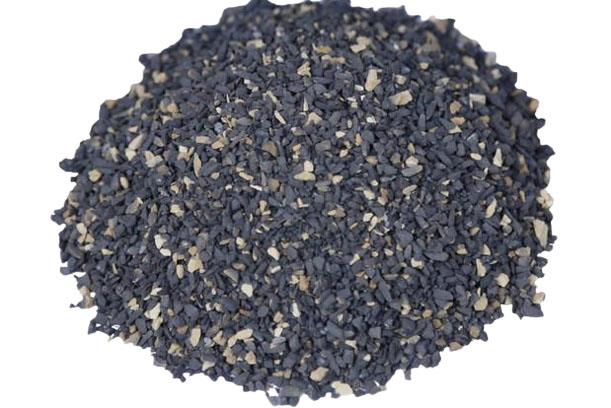
Mullite is a refractory material primarily composed of 3Al2O3·2SiO2. Natural mullite is rare, so it is often synthesized artificially through processes like sintering or fusion. Mullite exhibits characteristics such as uniform expansion, good thermal shock stability, high softening point under load, low creep at high temperatures, high hardness, and excellent resistance to chemical corrosion.
(7) Zirconia Mullite
Zirconia mullite is synthesized by combining industrial alumina, kaolin, and zircon in a finely ground, uniformly mixed form, followed by semi-dry pressing and high-temperature calcination at 1600-1700°C. Increasing the content of zircon in the mixture raises the sintering temperature, reduces the total shrinkage, and increases the closed porosity. These reactions result in zirconia mullite with higher density, strength, thermal shock resistance, and resistance to slag corrosion.
(8) Magnesium Aluminum Spinel
Magnesium aluminum spinel is synthesized by using industrial alumina and lightly calcined magnesia as raw materials, either through high-temperature sintering or fusion. The chemical formula of magnesium aluminum spinel is MgO·Al2O3, with a magnesium oxide (MgO) content of 28.2% and an alumina (Al2O3) content of 71.8%. It possesses advantages such as high temperature resistance, wear resistance, corrosion resistance, high melting point, low thermal expansion, low thermal stress, good thermal shock stability, strong resistance to alkaline slag corrosion, and excellent electrical insulation properties.
(9) Andalusite, Sillimanite, Kyanite
With a chemical formula of Al2O3·SiO2 and a theoretical composition of 63.1% Al2O3 and 36.9% SiO2, these minerals irreversibly transform into mullite and quartz upon heating. They exhibit good resistance to slag corrosion, excellent thermal shock stability, and a high softening point. Minerals from the kyanite group are high-quality raw materials for amorphous refractories. Andalusite and sillimanite, due to minimal volume changes upon heating, can be directly used for brick production or as refractory aggregates. Kyanite, on the other hand, expands significantly upon heating and can be utilized as an expanding agent in amorphous refractories.
(10) High Alumina Bauxite
High alumina bauxite resources in China are primarily distributed in Shanxi, Henan, Guangxi, and Guizhou. Calcined high alumina bauxite clinker is mainly used for high-alumina refractory materials and can also be used to produce fused brown corundum and semi-fused corundum. In recent years, the application of calcined bauxite clinker, with its low absorption rate and stable performance, has yielded good results in amorphous refractory materials.
(11) Soft Clay
Soft clay mainly consists of kaolin or hydrated kaolin, along with other impurity minerals. Its Al2O3 content can range from 22% to 38%, and its refractoriness averages around 1600°C. Soft clay is typically in a soil-like form with fine particles that disperse easily in water, exhibiting high plasticity and bonding strength. It finds wide applications in plastic refractories, ramming materials, gunning mixes, refractory mud, and medium-to-low-grade refractory materials.
(12) Clay Clinker
According to the different raw materials and production methods used, clay refractory clinker can be divided into two types: one type is obtained by directly calcining hard clay blocks in a kiln; the other type is produced by using kaolin or hard clay, undergoing processes such as fine grinding, homogenization, pressure filtration, dehydration, and drying, and finally being burned in a kiln. It is a high-quality clay clinker. The main mineral phase of hard clay clinker is mullite, accounting for 35% to 55%, followed by glassy phase and quartz. Clay clinker is the main raw material for ordinary aluminosilicate refractory materials.
(13) Magnesite.
Magnesite is a natural alkaline mineral material primarily composed of magnesium carbonate (MgCO3). China has abundant magnesite resources with high quality and large reserves. Magnesite is mainly found in Liaoning Province. It is primarily used for the production of sintered magnesia, fused magnesia, and raw materials for alkaline refractory materials.
(14) Sintered Magnesia.
Sintered magnesia is the product obtained by fully sintering magnesite at temperatures ranging from 1600 to 1900°C. The main mineral is magnesite. High-quality magnesia typically has a magnesium oxide (MgO) content of over 95% and a bulk density of no less than 3.30 g/cm3. It exhibits excellent resistance to alkaline slag erosion. Sintered magnesia is one of the primary raw materials for the production of alkaline refractory materials.
(15) Fused Magnesia.
Fused magnesia is produced by melting selected magnesite or sintered magnesia in an electric arc furnace at temperatures above 2500°C. Compared to sintered magnesia, fused magnesia has larger crystal grains of the main phase, magnesite, in direct contact, higher purity, dense structure, strong resistance to alkaline slag, and good thermal shock stability. It is an excellent raw material for advanced carbon-free bricks and unshaped refractory materials.
(16) Silicon Carbide.
Silicon carbide is typically produced by high-temperature smelting of a mixture consisting mainly of coke and silica sand in an electric furnace. It forms β-SiC (cubic crystal) at temperatures between 1400 and 1800°C and α-SiC (hexagonal crystal) at temperatures above 1800°C. Silicon carbide possesses high hardness, high thermal conductivity, low thermal expansion rate, and excellent resistance to neutral and acidic slags. Commercial silicon carbide compositions range from 90% to 99.5% SiC. Refractory castables, gunning mixes, ramming mixes, and plastics often use higher purity silicon carbide.
(17) Silica Fume.
Silica fume is a byproduct in the production of silicon metal and silicon products. It appears as a fine powder ranging from white to dark gray, with spherical particles typically having diameters of 0.02 to 0.45 μm and a specific surface area of approximately 15 to 25 m2/g. In recent years, some silica fumes have become primary products rather than byproducts. It exhibits high purity, a white color, and stable composition. Silica fume shows excellent rheological properties when used in self-flowing castables.
(18) Graphite.
Graphite can be classified into artificial graphite and natural graphite. Artificial graphite is produced either by graphitizing petroleum coke (heating above 2800°C) or through the process of graphitization using graphite electrodes. Natural graphite crystals have a hexagonal crystal system with rhombohedral symmetry. They typically exist in three forms: amorphous, flake graphite, and crystalline graphite. Amorphous graphite (without definite form) and artificial graphite have better flowability than flake graphite and crystalline graphite when used in castables.
(19) Asphalt
Coal tar asphalt has a higher carbon residue than petroleum asphalt and can effectively provide carbon components to refractory materials. It can be used in fine powder or granular form, depending on the formulation requirements of the materials. Asphalt is preferred over other forms of carbon (such as graphite) in the application of amorphous refractory materials because of its low melting temperature, which allows it to encapsulate particles and provide a protective layer against slag corrosion.
(20) Calcium aluminate cement
The main method for producing high alumina cement is the sintering process, where relatively pure limestone is used as the raw material for producing calcium oxide, which is the precursor for all calcium aluminate cements. Sintered alumina is used for producing high-grade calcium aluminate cement, while low-iron, low-silica bauxite is used as the raw material for medium-grade and low-grade high alumina cements. Pure calcium aluminate cement or high alumina cement is the most important hydraulic cement used for refractory castables and gunning materials. During the construction of refractory castable linings, strict control must be exercised over water temperature and amount, mixing strength and time, temperature, and heating rate. Among these parameters, temperature is the most important, as it significantly influences the formation of cementitious phases and the removal of moisture during the initial heating.
(21) Silica sol
Silica sol is a colloidal suspension of silica particles in water. It is a slightly viscous milky white liquid with a high specific surface area. Silica sol can be gelled by dehydration, pH adjustment, addition of salts, or by mixing with water-miscible organic solvents. During drying, rapid dehydration occurs on the surface of the particles, forming siloxane (Si—O—Si) bonds, resulting in polymerization and internal bonding. The transformation of the sol into a solid is called gelation. Silica sol is commonly used in coatings, castables, pumpables, ramming materials, and gunning materials.
(22) Sodium silicate
Common silicates include sodium silicate (Na₂O·mSiO·nH₂O), potassium silicate, and lithium silicate. Anhydrous sodium silicate is typically transparent and soluble in water, hence it is also known as water glass. The molar ratio of SiO₂ to Na₂O (referred to as the modulus of water glass) in industrial products ranges from 0.5 to 4.0, while the molar ratio for sodium silicate used in refractory materials is typically between 2.2 and 3.35. The viscosity of sodium silicate solution is influenced by its molar ratio and concentration, and it varies significantly with temperature. Sodium silicate undergoes hydration in water, resulting in an alkaline solution. Lower molar ratios exhibit more pronounced sodium silicate hydration and a decrease in pH. Sodium silicate with higher molar ratios exhibits slower hydration reactions. The choice of sodium silicate as a binder for refractory materials depends on the specific application. Common curing agents include sodium fluosilicate, polyaluminum chloride, phosphoric acid, sodium phosphate, polyaluminum phosphate, polyphosphoric acid, magnesium polyphosphate, ammonium pentaborate, formaldehyde, citric acid, tartaric acid, ethyl acetate, etc.
(23) Phosphoric Acid and Phosphates
Phosphoric acid itself does not have binding properties. It is only when it comes into contact with refractory materials and rapidly reacts to form phosphates that it exhibits good binding properties. Different forms of phosphates can be used as binders. The most commonly used salt in refractory materials is aluminum phosphate. Aluminum dihydrogen phosphate, known for its solubility in water, binding strength, and stability, is used as a binder. Sodium phosphate is mainly used in refractory materials for condensation, decondensation, and as a binder for alkaline repair materials. Polyphosphate is often used as a water reducer in castables. Additionally, sodium phosphate can react with alkaline earth metal compounds (such as CaO and MgO) to produce condensation. It is these properties of sodium phosphate that make it suitable for use in magnesia-based alkaline repair materials.
(24) ρ-Al₂O₃
ρ-Al₂O₃ is an active form of aluminum oxide that differs from other crystalline forms of Al₂O₃ and has the poorest crystallization. Among the various crystalline forms of Al₂O₃, only ρ-Al₂O₃ exhibits spontaneous hydration reaction at room temperature. The sol of trihydrate aluminum and boehmite formed during hydration can act as binders and contribute to hardening. At high temperatures, ρ-Al₂O₃ eventually transforms into an excellent refractory material, α-Al₂O₃ (corundum). Therefore, the castables bound by ρ-Al₂O₃ can be considered as self-bonding refractory castables, acting not only as binders but also as advanced refractory oxides with evident excellent performance.
By selecting different raw materials as the main ingredients of refractory castables, castables with different performance, temperature ranges, and applications can be produced. However, relying solely on the main raw materials is not sufficient. Binders, additives, and certain special additives are also needed to enhance the performance of refractory castables. In the next article, we will provide detailed introductions to commonly used materials.

